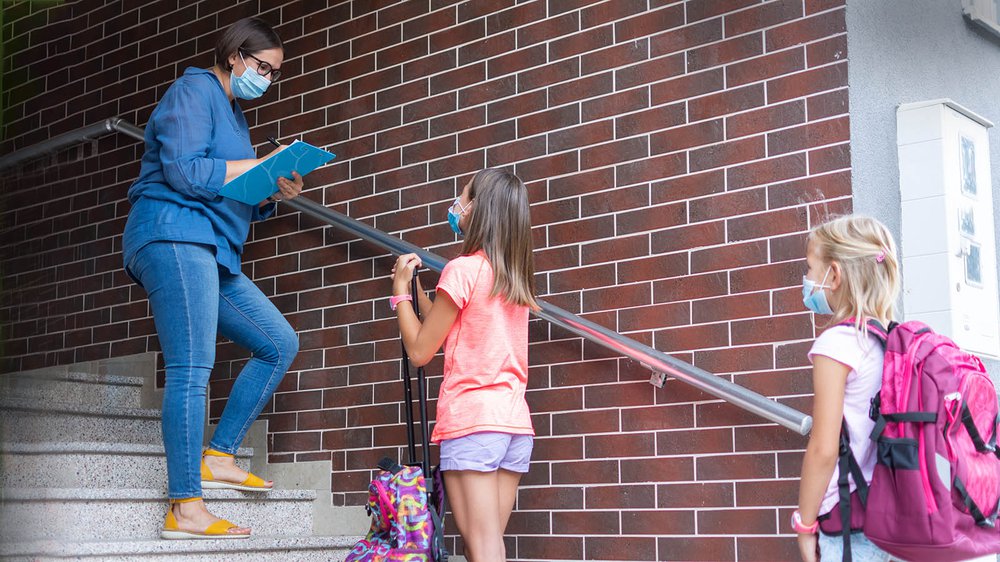Here’s a state-by-state breakdown of education stimulus funds – By Charles Hendrix, District Administration
The U.S. Education Department will be making nearly $122 billion in ESSER funds allocated as part of the American Rescue Plan Act available to state educational agencies this month according to a letter from Education Secretary Miguel Cardona.
“We will move quickly to get these vital resources to you,” Cardona wrote in a letter to chief state school officers. “It is with this same sense of urgency that state educational agencies (SEAs) and school districts should plan to expend these funds to safely reopen schools as expeditiously as possible this spring, sustain their healthy operations, and address the significant academic, social, emotional, and mental health needs of their students.”
he department also released a state-by-state allocations table with the methodology used to calculate the allocations, based on the proportional share of FY 2020 Title I, Part A funds, as well as a fact sheet on what the department is calling the ARP ESSER fund.
Cardona said the funds will enable SEAs, LEAs, and schools “to support students who have been most severely impacted by the pandemic, which has even further exacerbated the inequities in our education system.”

N.J. schools won’t be allowed to offer any virtual learning options next year, Murphy says – By Matt Arco, NJ.com
New Jersey’s schools will return to full in-person classes for the next school year and districts will not be allowed to offer virtual learning, even for parents who want that option due to ongoing COVID-19 concerns, Gov. Phil Murphy said Wednesday.
“As we’re sitting here now, no,” Murphy said during his latest coronavirus briefing in Trenton, responding to NJ Advance Media’s question about preserving that option even if districts are required to offer full in-person classes. “I want to unequivocal about this. We are expecting Monday through Friday, in-person, every school, every district. Obviously, if the world goes sideways, we have to revisit that. But as of this sitting, the answer is no.”
The governor has said he’s “fully expecting” schools across New Jersey to return for in-person learning “safely and responsibly” when the next school year starts in September. And if that’s the case, virtual learning is out.
As of Wednesday, 143 districts with about 97,000 students are open for all in-person instruction, Murphy said. In addition, 534 districts with more than 833,000 students are open for hybrid instruction. Another 44 districts with 121,600 students are in a mix of in-person, hybrid, or all-remote learning, while 90 districts with 302,000 students remain all remote.

Governor Phil Murphy
State legislators consider new way to calculate education funding post-pandemic – By Eileen O’Grady, Concord Monitor
The concern is high for New Hampshire school district superintendents that a COVID-related drop in student enrollment will cause education funding to plummet next year. But help could be on the way in the form of a bill now in the New Hampshire House that seeks to maintain current levels of education funding by calculating it using data from before the pandemic.
The bill, SB 135, would require the New Hampshire Department of Education to compare the average daily membership numbers for each district from both the 2019-20 and 2020-21 school years, and use whichever number is larger to calculate funding for school year 2021-22.
“What this bill does is fix some unforeseen challenges that our schools have had as a result of the pandemic,” said Sen. Erin Hennessey, the Littleton Republican who sponsored the bill, at a House Education Committee hearing Thursday.
Many districts saw significant drops in student enrollment last fall as parents opted to switch their children to private or home school due to the pandemic. Since a large part of public school costs are covered by per-pupil “adequacy aid,” calculated based on enrollment numbers from the year before, 2020 numbers could cause school districts to lose millions of dollars in 2021-22, even if the students end up returning next fall.

DeSantis proposes $75 million in initiatives to boost Florida workforce – By Eric Rogers, Florida Today
Florida Gov. Ron DeSantis, at a news conference Monday in Eau Gallie, announced a proposal for $75 million in career training initiatives to boost vocational education throughout the state.
The programs would help fast-track high school students and adults with or without a high school degree into high-paying skilled-labor jobs in growth industries like technology and manufacturing, DeSantis said.
Funding would come from pots of money allocated over the last year through the various federal coronavirus relief bills, including $15 million designated for K-12 education relief and $25 million from the governor's emergency education response fund, he said.
These "Get There Faster" initiatives would provide an alternative to the traditional four-year college career path for many students, DeSantis said.
"Those four-year, brick-and-ivy universities, while one to way to potentially advance yourself, are not the only way, and for many students, certainly not the best way," DeSantis said.












